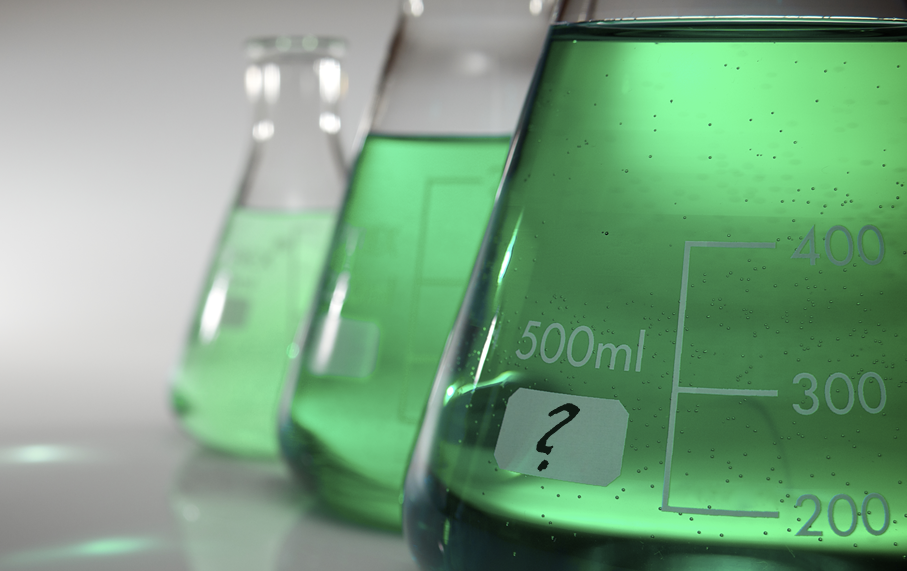The manufacturer does vapor deposition. Coating was successful – except when it wasn’t. The manufacturer wanted consistently higher yield. We were helping them to achieve well-documented cleaning processes for products in consumer, aeronautical, and even medical-related applications. Consistent, reliable surface preparation is a must because without effective cleaning, vapor deposition becomes problematic. The final finish can be adversely impacted both aesthetically and functionally.
Look Around
Our first step was a site visit. To document your own cleaning processes, pretend to be an outside visitor, even if you are positive you understand the cleaning process. We looked at soils, substrates (the materials being cleaned), cleaning agents, and cleaning processes. Because surfaces were cleaned by hand and written documentation was at best ephemeral, we observed their in-house “cleaning ladies” and asked them to show us how they got the parts clean. It’s a good idea to observe the cleaning process, even with automated cleaning systems and even if there is detailed written documentation about the cleaning process. The cleaning process may be described in excruciating detail, but it can be totally inaccurate relative to actual day to day activities.
Our client used one cleaning agent with many product lines. They purchased the product at a “big box” store and was marketed for both consumer and manufacturing use. We overwhelmingly prefer products that are designed for critical product cleaning. However, this product had an SDS and was supported by a lab. A real lab staffed with real, intelligent formulations chemists who would actually talk with us. Particularly with critical cleaning of high-value product, get to know the lab. We contacted one of the chemists and asked “what’s new?”
What’s New?
As it turns out a great deal was new. The product had been reformulated; and the changes could impact cleaning quality. Environmental regulations changed the allowable level of volatile organic compounds (VOCs). This meant that the product formulation changed. The changes might not be clearly apparent on the SDS, in part because the Safety Data Sheet is geared toward worker safety and, particularly for aqueous cleaning agents, toward the impact of the waste stream on aquatic life. Changes that don’t impact workers could still cause problems in manufacturing.
How had the product changed? For one thing, the new product straight from the bottle (“neat”) was 1:7 the dilution of the original cleaning agent. Also, the original product held oils in suspension; the new product was oil-splitting.
What the Changes Mean
The new product was more dilute, a signal that performance would be different. Efficacy of cleaning could be impacted. The quality and quantity of cleaning agent residue might change; so rinsing would need to be adjusted. Changes in ingredients could signal potential materials compatibility problems. The substrate (the materials of construction of the part) could be damaged.
The original formulation held oils in suspension; the new formulation was oil-splitting. This change could be positive or negative, depending on the cleaning process. Holding oils in suspension is a useful property because the soil is held away from the surface. Products that hold oils in suspension are effective where baths are routinely replaced after a few runs or if the parts are hand-wiped. However, with increased soil loading, cleaning is no longer effective.
In oil-splitting cleaning agents, the oils and metalworking fluids form a separate phase from water. The oil pops to the top of the bath, sort of like fat rises to the top of a pot of soup. Cleaning equipment is often built with a sparger or weir in the wash tank, so the oil is continuously removed. With some formulations, the cleaning agent is held in a separate tank and the oil removed periodically. In comparison, a cleaning process using an oil-splitting chemistry tends to be more stable over a greater number of runs; and the bath lasts longer. The longer the bath life, the lower the costs to handle the spent cleaning agent. On the other hand, if you have an oil splitting process but do not skim off the oil, oil can be deposited back on the part as it is lifted from the bath.
Product Support
Product support matters; and product support depends on having a direct, reliable, informative connection with the cleaning agent supplier. We asked the cleaning agent manufacturer why there was no customer notification of the change. The reason was that the distributors and salespeople knew about the change and were supposed to inform the customer (our client). Recall, however, that this client routinely purchased the product at a big box store. The store would have been concerned with issues like consumer safety. Successful cleaning and surface quality of high-value product prior to vapor deposition was not likely to be on their radar.
“New and Improved” marked on the product could have provided a needed flag. However, in this case, there was only a small star (approximately 6 point font) on the manufacturer’s label to denote the change. It was easily missed, sometimes covered over by the retailer’s label. The significance of the star was not intuitively obvious.
Change is Inevitable
Aqueous cleaning agents can be complex. Some formulations may remain constant for decades; others may change. Safety and environmental regulations and availability of ingredients for formulation can impel formulators to make changes. There are ways to avoid unexpected and uncommunicated changes in cleaning agents.
Cleaning agents must be consistent and well-defined, especially in such areas as aerospace, optics, and medical device applications. The first source of information may be the rep who sells you the cleaning agent. However, the sales and distribution chain for cleaning agents can be long; and not all individuals in that chain may be aware of your precise requirements.
A more direct approach is to establish a relationship with the technical people at the company that makes the cleaning agent. Work with people at the company that has its name on the cleaning agent label. Let them know that your application is sensitive to even minor formulation changes. Insist on a prompt, reliable communication path for product changes. Letting you know about a cleaning agent change is not enough. How do you manage the change? Make sure the cleaning agent company provides lead time prior to a formulation change; and find out if they have the technical resources to help you.

About the authors
Barbara and Ed Kanegsberg of BFK Solutions are recognized consultants in critical product cleaning. Projects encompass medical device manufacturing, engineered coatings, metals, additive manufacturing, electronics assembly, and optics. Barbara’s background includes biology, clinical chemistry and aerospace. Barbara was an appointed United States Expert to ISO/TC 209 WG 12: (cleaning of surfaces). She received a U.S. EPA Stratospheric Ozone Protection award for her work in solvent substitution. Ed is a chemical physicist and engineer. He has decades of experience in physics and engineering, specializing in the transition of products from prototype to production.
The Kanegsbergs publish extensively, lecture at the post-graduate level, and teach practicing engineers and manufacturers. They conducted an acclaimed two-day Product Quality Cleaning Workshop (PQCW) with Sam Houston State University; the program combined instruction with demonstrations and hands-on lab exercises; a second PQCW is planned for May 2020. They are co-editors of and contributors to the two-volume "Handbook For Critical Cleaning," second edition, CRC Press, 2011. Contact: 310-459-3614 info@bfksolutions.com
Techspray Has The Solution!
With any formula change, Techspray informs our customers directly, if possible, or through the supply chain (distributors and sales representatives). Users of Techspray products can register their products at https://www.techspray.com/registration to ensure they have direct communication of any changes.
Please contact us at info@itwcce.com or 800-858-4043 for technical help finding the best product for your cleaning application.




